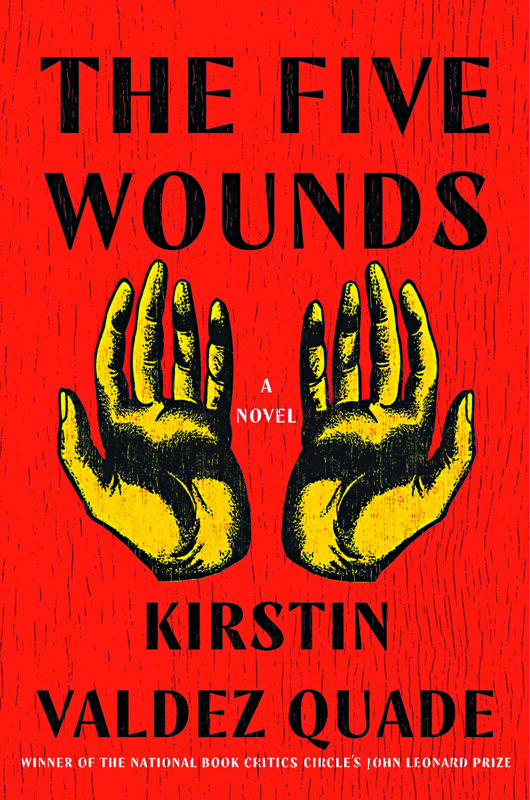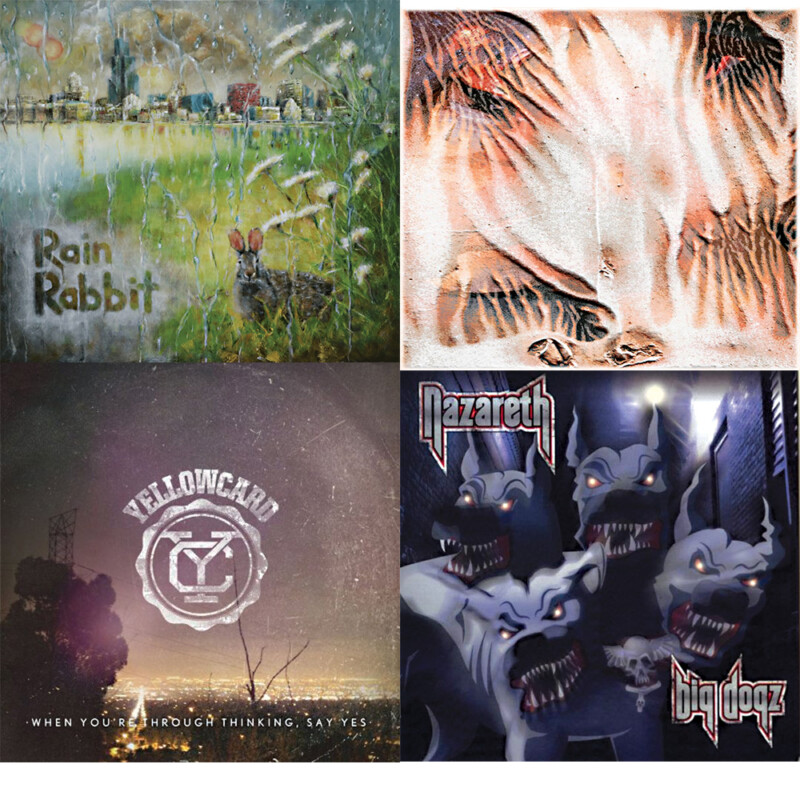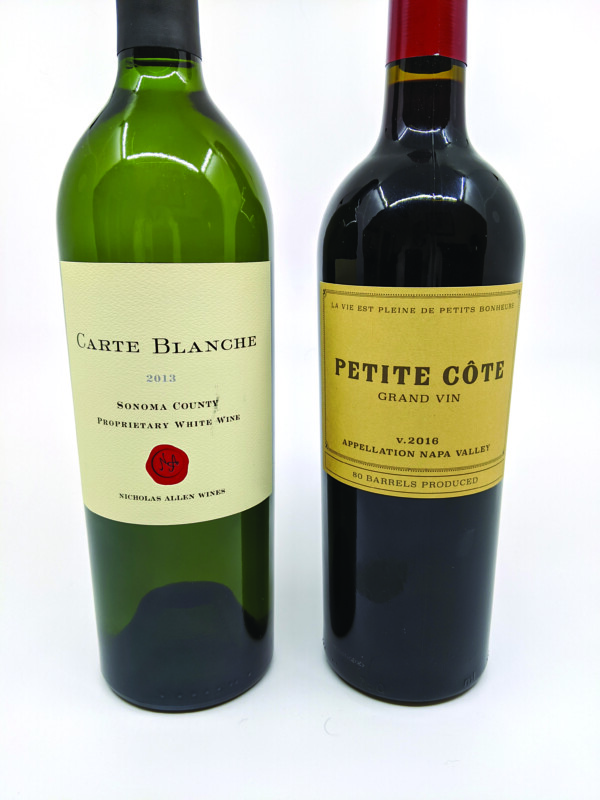The Five Wounds, by Kirstin Valdez Quade (W.W. Norton, 416 pages)
You may think that you have no interest in a story about a troubled family set in New Mexico, a story that, just two pages in, reproaches you for not remembering more of the two years of Spanish you had in high school.
You would be wrong. Not about the fact that you should know more Spanish — this is true — but about not relating to The Five Wounds, Kirstin Valdez Quade’s deeply affective portrait of a family that is likely vastly different from yours, but similar in profound ways. But first you have to get past the crucifixion.
The central character is Amadeo Padilla, an unemployed man who lives with his mother and drinks too much. Padillo is 33, “same as Our Lord, but Amadeo is not a man with ambition.” But when he is chosen to portray Jesus in a re-enactment of the Passion, Padilla suddenly finds hope. It is, he thinks, a role he was born to play, and he throws himself into preparation for the Good Friday ceremony with an energy that he has never before assigned to any task, including parenting.
This is painfully clear when, on Holy Week, he comes home to find his 15-year-old daughter, heavily pregnant, waiting for him. Angel lives with her mother, and he hadn’t seen her in more than a year. To Amadeo, the arrival is supremely ill-timed; he is busy being Jesus, and has neither time nor desire to do the onerous chores of parenting, such as helping his daughter get to school on time. World-weary Angel, who had a fight with her mom, has nowhere else to go, however, and had hoped to get some mothering from her grandmother, if not her father, for whom she has no expectations of competency.
But the grandmother, Yolanda, isn’t there — for her own heart-rending reasons later disclosed. So, for a few days, Angel is thrust into being a parent to herself and to her dad, who has decided that, after the upcoming crucifixion, he will make his fortune with a do-it-yourself windshield repair business with a kit he ordered for $1,199. “Amadeo images windshield repair is a trade Jesus might get behind. It is, essentially, carpentry for the 21st century,” Quade writes.
The novel seamlessly switches perspectives, from Amadeo to Angel to Yolanda, who arrives home (memorably described as “an adobe-style house soiled pink with iron bars on the windows”) on Easter day, planning to break the news of a life-altering diagnosis. Instead, she is plunged into assorted family dramas in which she has to assert matriarchal control: her warring adult children, her soon-to-deliver granddaughter, who has not even had so much as a baby shower, just a load of used baby clothes that haven’t even been washed, “as though [the] home were a Goodwill dumpster.”
“Having children is terrifying, the way they become adults and go out in the world with cars and functioning reproductive systems and credit cards, the way, before they’ve developed any sense or fear, they are equipped to make adult-sized mistakes with adult-sized consequences,” Quade writes.
The novel continues to build on small but volcanic things: Yolanda’s increasingly worsening health, Amadeo’s budding business and relationship with his daughter’s godmother and teacher; and, of course, the birth of the baby, which is the beating heart of the story, in fact, in some ways, of all of life.
The child, “unplanned and unwanted, dreaded and bemoaned,” turns out to be the saving of them all. “No child has ever been as needed, as necessary and beloved,” Amadeo thinks as he desperately tries to navigate a crisis late in the waning pages of the book.
The Five Wounds is a novel that builds slowly, set in a region of the United States that does not get a lot of literary attention. Nor, it could be argued, do the novel’s themes. The book takes seriously an unusual expression of religious faith — the live Passion plays that are popular in Mexico and in other places heavily influenced by Hispanic culture.
It begins and ends on Holy Week, one year apart, and as Amadeo reflects on his successor in the role of Jesus, he observes that the suffering of a man 2,000 years ago, “suffering that was newly astonishing, but also just like the suffering of the men crucified beside him, just like the suffering of every person before and after.” So, too, this strangely absorbing story. A
BOOK NOTES
In January a widely publicized open letter dubbed “No book deals for traitors” demanded that no current or former member of Donald Trump’s team find a home in mainstream publishing. The effectiveness of that effort was recently revealed in news that Kellyanne Conway, Mike Pence and William Barr all have book deals. (Pence got a two-book deal from Simon & Schuster, also Conway’s future publisher.)
Right now, however, the political book that is getting all the attention is Elizabeth Warren’s Persist (Metropolitan Books, 320 pages), despite lackluster reviews. NPR drubs it as “a series of stories, then plans,” and, equally damning, “campaign-trail Warren, in book form,” nothing Warren will want to use as a jacket blurb.
Then again, it seems unfair to demand that politicians also be compelling writers.
Meanwhile, for an examination of why one of our most compelling authors was successful, check out The Artful Dickens, by John Mullan (Bloomsbury, 448 pages). Mullan promises to reveal “the tricks and ploys” of the beloved author. One is that to fully embrace Dickens’ genius, you need to read his writing out loud. A literary critic and English professor in London, Mullan organizes his thoughts into 13 essays. Dickens fans will be especially interested to learn the specifics of how the author arrived at the memorable names of his characters, such as Scrooge and Pecksniffian.
After that, check out last year’s The Mystery of Charles Dickens, by A.N. Wilson (Harper, 368 pages), published in conjunction with the 150th anniversary of his death at age 58. Part literary analysis, part biography, the book is also the author’s personal reflection of what Dickens meant to him. Wilson maintains that of all the great novelists, Dickens was the most mysterious, then does his best to open the veil.
Books
Author events
• SUZANNE KOVEN Author presents Letter to a Young Female Physician, in conversation with author Andrew Solomon. Hosted by The Music Hall in Portsmouth. Tues., May 18, 7 p.m. Virtual. Tickets cost $5. Visit themusichall.org or call 436-2400.
• MEREDITH TATE AND CAMERON LUND Tate presents Shipped. Lund presents Heartbreakers and Fakers. Hosted by Gibson’s Bookstore in Concord. Virtual, via Zoom. Thurs., May 20, 7 p.m. Registration required. Visit gibsonsbookstore.com or call 224-0562.
• KEVIN KWAN Author presents Sex and Vanity. Hosted by The Music Hall in Portsmouth. Thurs., May 27, 7 p.m. Virtual. Tickets cost $5. Visit themusichall.org or call 436-2400.
• ANNETTE GORDON-REED Author presents On Juneteenth. Hosted by The Music Hall in Portsmouth. Thurs., June 3, 7 p.m. Virtual. Tickets cost $5. Visit themusichall.org or call 436-2400.
Call for submissions
• NH LITERARY AWARDS The New Hampshire Writers’ Project seeks submissions for its Biennial New Hampshire Literary Awards, which recognize published works written about New Hampshire and works written by New Hampshire natives or residents. Books must have been published between Jan. 1, 2019 and Dec. 31, 2020 and may be nominated in fiction, nonfiction, poetry, children’s picture books, middle grade/young adult books. All entries will be read and evaluated by a panel of judges assembled by the NHWP. Submission deadline is Mon., June 21, 5 p.m. Visit nhwritersproject.org/new-hampshire-literary-awards.
• COVID POETRY ANTHOLOGY New Hampshire residents are invited to submit original poems for review and possible publication in COVID Spring Vol. II,an anthology of poetry about the pandemic experience in New Hampshire, to be edited by New Hampshire Poet Laureate Alexandria Peary and published by Hobblebush Books this summer. Youth age 18 and under may also submit original poems to be considered for the anthology’s new youth section. Submit a poem or poems (up to three) by Sun., May 23, through the online submission form at hobblebush.com/anthology-submissions. Poets will be notified of the editor’s decision by June 15.
Book Clubs
• BOOKERY Online. Monthly. Third Thursday, 6 p.m. Bookstore based in Manchester. Visit bookerymht.com/online-book-club or call 836-6600.
• GIBSON’S BOOKSTORE Online, via Zoom. Monthly. First Monday, 5:30 p.m. Bookstore based in Concord. Visit gibsonsbookstore.com/gibsons-book-club-2020-2021 or call 224-0562.
• TO SHARE BREWING CO. 720 Union St., Manchester. Monthly. Second Thursday, 6 p.m. RSVP required. Visit tosharebrewing.com or call 836-6947.
• GOFFSTOWN PUBLIC LIBRARY 2 High St., Goffstown. Monthly. Third Wednesday, 1:30 p.m. Call 497-2102, email elizabethw@goffstownlibrary.com or visit goffstownlibrary.com
• BELKNAP MILL Online. Monthly. Last Wednesday, 6 p.m. Based in Laconia. Email bookclub@belknapmill.org.
• NASHUA PUBLIC LIBRARY Online. Monthly. Second Friday, 3 p.m. Call 589-4611, email information@nashualibrary.org or visit nashualibrary.org.
Featured photo: The Five Wounds






